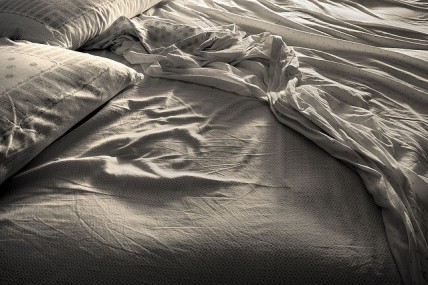
Photograph by Flavio Ronco
Anna Sumner’s craving for sleep began when she was an 18-year-old high school senior. She thought nothing of it.
When it followed her to college, she blamed it on stress. She was working so hard, she told herself, her body just needed the extra rest. But it was more than that. She would chose naps over eating lunch, working out, or being with friends. Every night after dinner, she came back to her dorm room to sleep. If her parents called on those evenings, her roommate would cover for her, telling them she had gone to the library.
After graduation, Sumner moved to Bangkok to teach English. Her sleeping continued, and so did her rationalizations. It was OK that she was napping between every class because she was adjusting to a warm climate. Then she spent a winter working in London. There, her excuse was the dark and dreary sky.
Her parents started worrying after she moved back to the U.S. for law school. The summer after her first year, she lived at their house in Mississippi while working for a law firm. “Every day I’d go to work, come home, say ‘Hi Mom and Dad’, and go to bed,” she recalls. “That was the entire summer.”
Sumner needed sleep like an addict needs a fix. “It was this overpowering desire in me, a physical urge,” she says. “And there was always the hope that, maybe this time, I would wake up feeling better.”
Sumner was almost 30 before finally confronting her problem. She had joined a high-profile law firm in Atlanta and, for the first time in her life, didn’t have a flexible schedule. She couldn’t nap without raising eyebrows. “That’s when it finally hit me,” she says. “This is not how you’re supposed to feel.”
In the fall of 2005, she sought help at the Emory Clinic Sleep Center. She learned that her problem, known as hypersomnolence, was rare but not unheard of. Over the next six years, a team of doctors there analyzed the chemicals in her brain and in the brains of 31 other hypersomniacs. They fingered one mysterious substance as the culprit.
When they tried to publish their data, many experts simply didn’t believe it. The prevailing theory is that excessive sleep stems from a failure in the brain’s arousal system, not from some unknown sleep-inducing chemical. Plus, the field had been burned decades before, when another group had trumpeted the discovery of a new, naturally occurring sleep molecule—and been proven wrong. But after being rejected at several other top-tier scientific journals, the data from the Emory researchers appeared yesterday in Science Translational Medicine.
Depending on how it is received by academia and the pharmaceutical industry, the study could lead to a new blockbuster sleeping pill, raking in billions of dollars and improving the lives of millions. Or it might fall flat.
In any case, the work gets credit for Sumner’s remarkable re-awakening.
Written by Virginia Hughes




